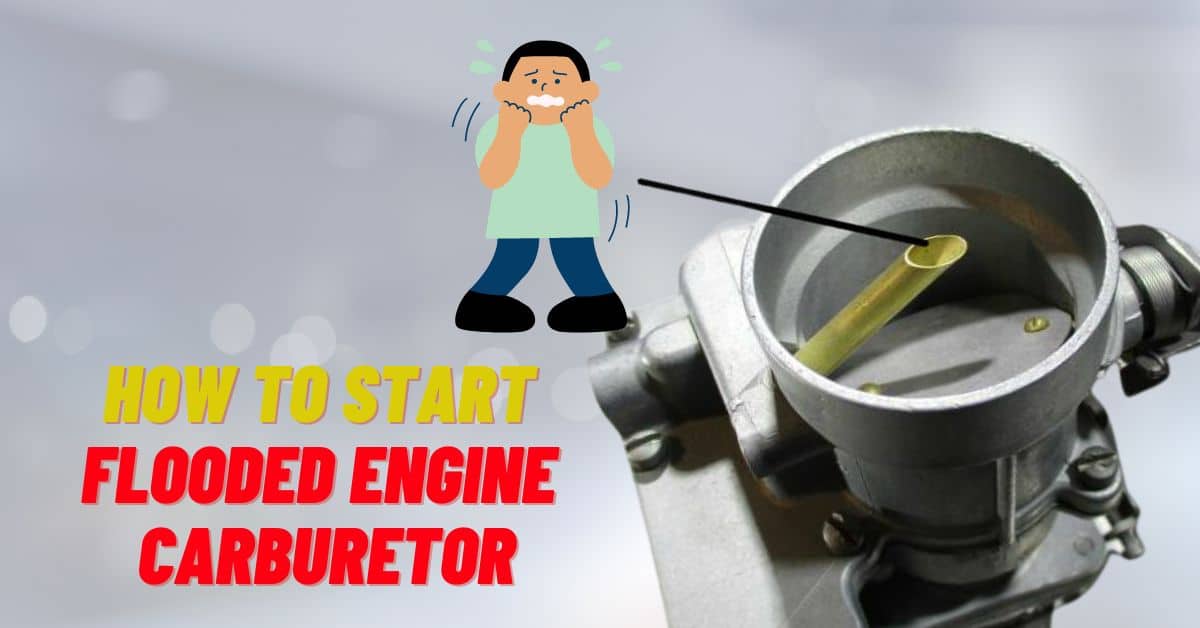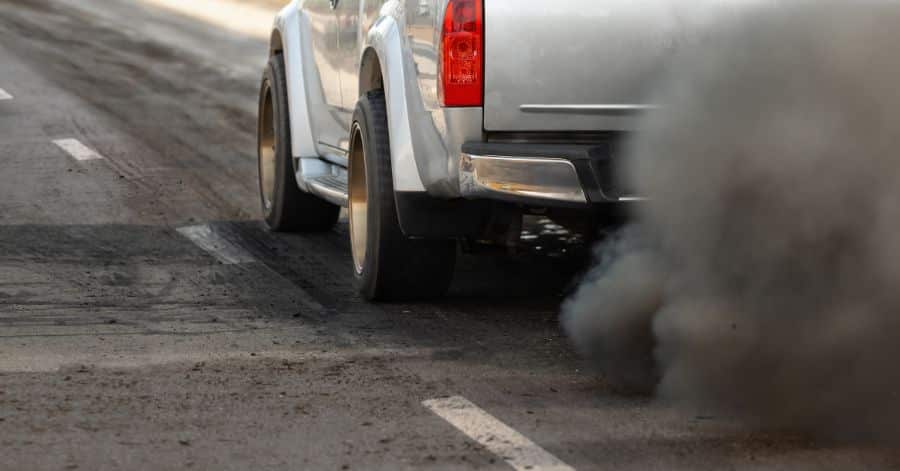To start a flooded engine carburetor, open the hood and wait a couple of minutes to let the excess fuel evaporate. It’s even better if you can also take out the air filters. Once you have waited enough, attempt to start your car without touching the gas pedal. If this doesn’t work, try pressing the gas pedal fully and then starting the car while holding it down.
You will get to know more about how to start a flooded engine carburetor later in this article.
What is a Flooded Engine Carburetor?
A flooded engine carburetor happens when too much gasoline enters the engine’s air-fuel system. This makes it difficult to start the car or even pose a fire hazard, as any spark can ignite the excess fuel. Flooded carburetors can especially occur in older cars rather than newer ones because newer cars use different technology.
In order for the engine to create power, it needs a perfect mix of air and gasoline. If there is too much gasoline and not enough air in the mix, the engine floods. Until the extra gasoline is cleared from an engine, it won’t run properly.
Flooding usually happens when you start the car and if you press the gas pedal too many times before starting. It can also happen when the gasoline inside the engine evaporates too much.

Causes of a Flooded Engine Carburetor
Now you know what is a flooded engine carburetor. But what floods an engine carburetor? Well, here are the reasons for a flooded engine carburetor-
Problems with the Float
If the float is damaged, has a hole or crack, or absorbs fuel, it can lead to the float becoming too heavy. As a result, the needle stays open and allows too much fuel to enter the engine. Incorrect float settings can also cause this.
Dirt in the Needle and Seat
Dirt and debris from a dirty gas tank or fuel line can enter the carburetor and clog the needle and seat assembly. This prevents the needle from properly sealing off the fuel flow, leading to excessive fuel entering the engine.
Fuel Pump Issues
If there is no proper fuel pressure regulation, it can cause flooding. An electric fuel pump without a regulator can pump too much fuel into the carburetor, overwhelming the engine.
Old Gasoline
Gasoline that has been sitting in the vehicle’s tank for an extended period can degrade and turn into varnish-like deposits. This rotten gas can create a coating on the inside of the carburetor. This can cause fuel delivery issues and lead to flooding.
Heat-Related Issues
Fuel lines placed too close to heat sources like radiator hoses or exhaust manifolds can cause the fuel to expand, leading to flooding.
Symptoms of a Flooded Engine Carburetor
Well, now you know the reasons why your carburetor might get flooded. But how do you know if your carburetor is flooded? Well, here are the symptoms of a flooded engine carburetor-
Strong Smell of Fuel
One of the first signs to look for if you suspect a flooded engine carburetor is a noticeable and strong smell of gasoline in the air around the car. If you do not know the smell of gas, it may smell like gas stations or gas fumes.
Dark Smoke from the Exhaust Pipe
When the engine is flooded, you will see dark, thick smoke emitting from the car’s exhaust pipe. This smoke is a result of the excess fuel in the engine not burning properly.

Difficulty Starting the Engine
The main issue with a flooded engine carburetor is that you will face difficulty starting the engine. When you try to start a flooded engine, it may crank but not start. In some cases, it might not even crank at all. You will feel as if the engine is struggling to turn over.

Accelerator Pedal Does Not Respond as Usual
Along with not starting with a flooded engine, pressing the gas pedal will not have the usual effect. The engine might sputter or stall, and the car will not respond to the pedal as it should.

Steps to Start a Flooded Engine Carburetor
When your engine gets flooded, it’s like having too much fuel and not enough air for your car to start properly. Here’s what you can do:
Step 1: Evaporate Excess Fuel
Pop the hood of your car and give it a moment. Let the excess fuel in the engine evaporate for a bit. This might take a couple of minutes. You can also take out your air filters to help the evaporation.
Once you’ve waited, give starting your car a shot again. But remember, don’t touch the gas pedal this time. Keep your foot away from it.
If the waiting game didn’t work, here’s another trick to try. Push the gas pedal all the way down and keep it there.
While holding the pedal down, try starting your car again. Hold the “Run” position for around five seconds. This could give your engine a bit of a rough start.
Step 2: Idle and Listen
Once your car’s running, let it idle for about five minutes. Listen closely – you want to hear a nice, smooth sound. That’s a sign that fuel is getting to the engine the way it should.
Step 3: Give It a Rest
Turn off the engine and let your car chill for an hour. This gives the fuel time to settle and any lingering air vapors a chance to escape.
Alternate Method
If your car still isn’t cooperating, it might be the spark plugs that are soaked with fuel. Take the spark plug out, clean them up, and give them time to dry before you try starting the car again.
And that’s it! With a little patience and the right moves, you can get your flooded engine back on track.
Conclusion
By now, you know how to start a flooded engine carburetor in three steps. But if you get confused with the steps or cannot get it started, then don’t hesitate to get help.
Last Updated on November 10, 2025 by Rifen
